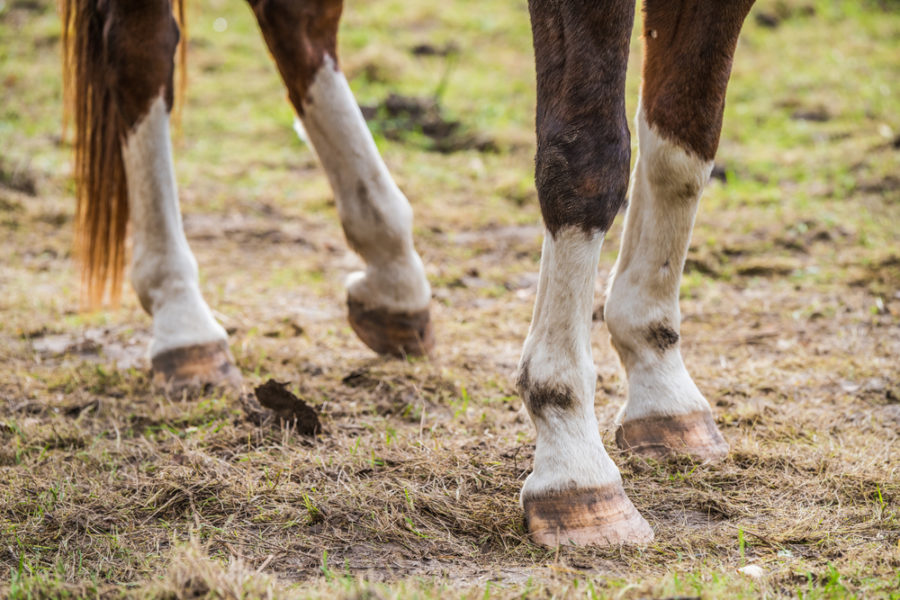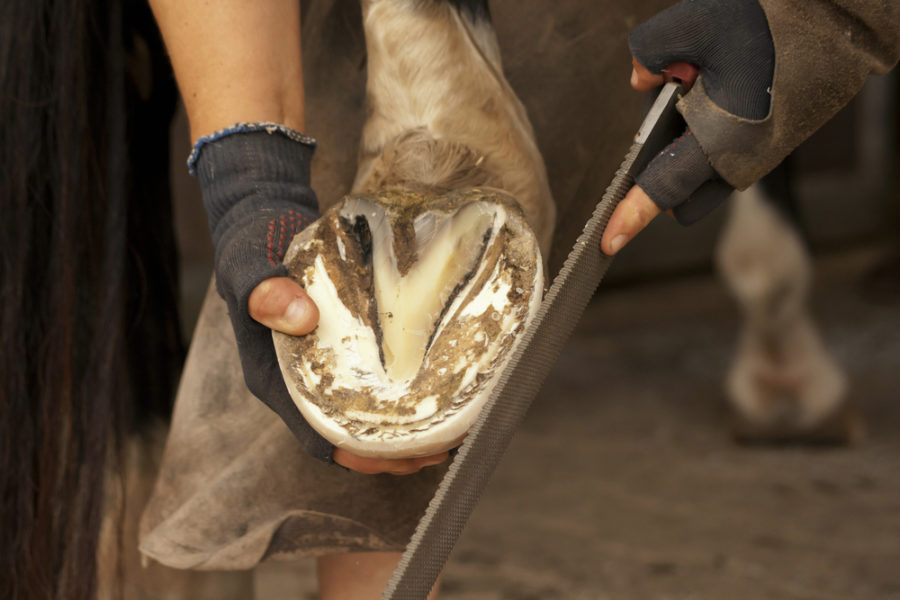Support your laminitic horse through the healing process with a natural approach — it’s affordable and effective!
In the past, a severe case of laminitis meant the end of the road for a horse. The conventional treatment of confinement, reverse shoes and pads, drugs such as Bute, and specific commercial processed feed (usually high in sugar) have proven to be expensive and often unsuccessful. Today, we’ve learned that many laminitic horses can return to soundness if their caretakers follow a natural rehabbing treatment plan. This plan includes a proper natural barefoot trim, changes in diet, and placing horses in an environment that encourages movement.
A natural treatment plan for laminitis
Barefoot trim
A proper barefoot trim by a barefoot farrier/trimmer is crucial, as a hoof that’s unencumbered by shoes is more adaptable to treatment. Depending on the circumstances, a horse may need to be trimmed every week, or every few weeks during an acute phase of laminitis. Once the horse is in the recovery phase, a trimming cycle of around four weeks is optimal.
Diet
The nutritional requirements of a laminitic horse are higher and often very specific. Laminitic horses need a high fiber, low carb, and low sugar diet. They need 24/7 access to free choice, high quality grass hay, or low protein hay fed through small hole hay nets and placed in various areas around the paddock to encourage movement. Antioxidants need to be added to the diet with free choice minerals, and vitamin and mineral supplements. Essential fatty acids such as flax seeds and hemp oil can be included. Nutritional herbs with anti-inflammatory qualities will aid digestion, cleanse the body, and promote healthy circulation and tissue growth. These include aloe vera, chamomile, dandelion root, St Mary’s thistle seed, Echinacea, hawthorn, white willow bark, celery seed, devil’s claw, rose hip, and garlic.
Environment
Do not confine laminitic horses no matter how much pain they are in. Horses need to move and exercise to improve circulation and metabolize nutrients to their toxic and damaged hoof tissues. A laminitic horse should be kept in a stress-free environment with minimal grass and soft terrain, allowing freedom to roam and move. A Paddock Paradise track system can help promote further movement. Metabolic horses with laminitis need exercise to regulate their blood sugar levels to assist in recovery.
Once the hooves have regained a sound shape, the horse can transition slowly back to a small amount of grass each day for a few hours. If the grass is dry, the time can be gradually increased.
Boots and pads
So long as the hoof wall is not too distorted, you can use pads and boots to relieve pain and encourage movement in all stages of laminitis.
Conclusion
When treating laminitis naturally, it is important that each case be approached individually. With natural management and treatment, a laminitic horse should shed and regrow a new hoof wall. The pedal bone (coffin bone) will reinstall back into the hoof capsule and the sole will repair. Be sure to consult with your veterinarian if you suspect your horse has laminitis – the earlier you can apply a natural treatment plan, the better chance of full recovery!




